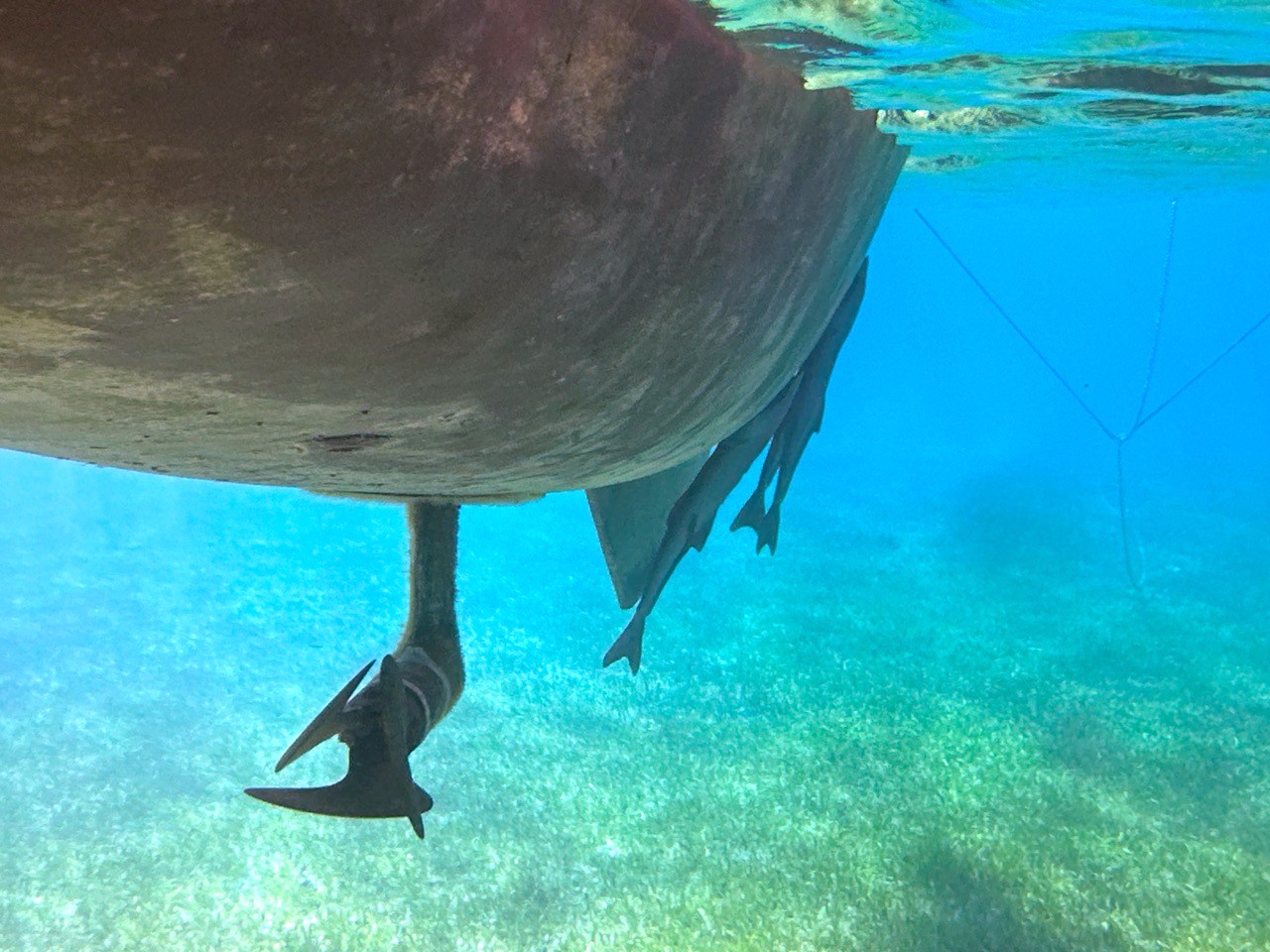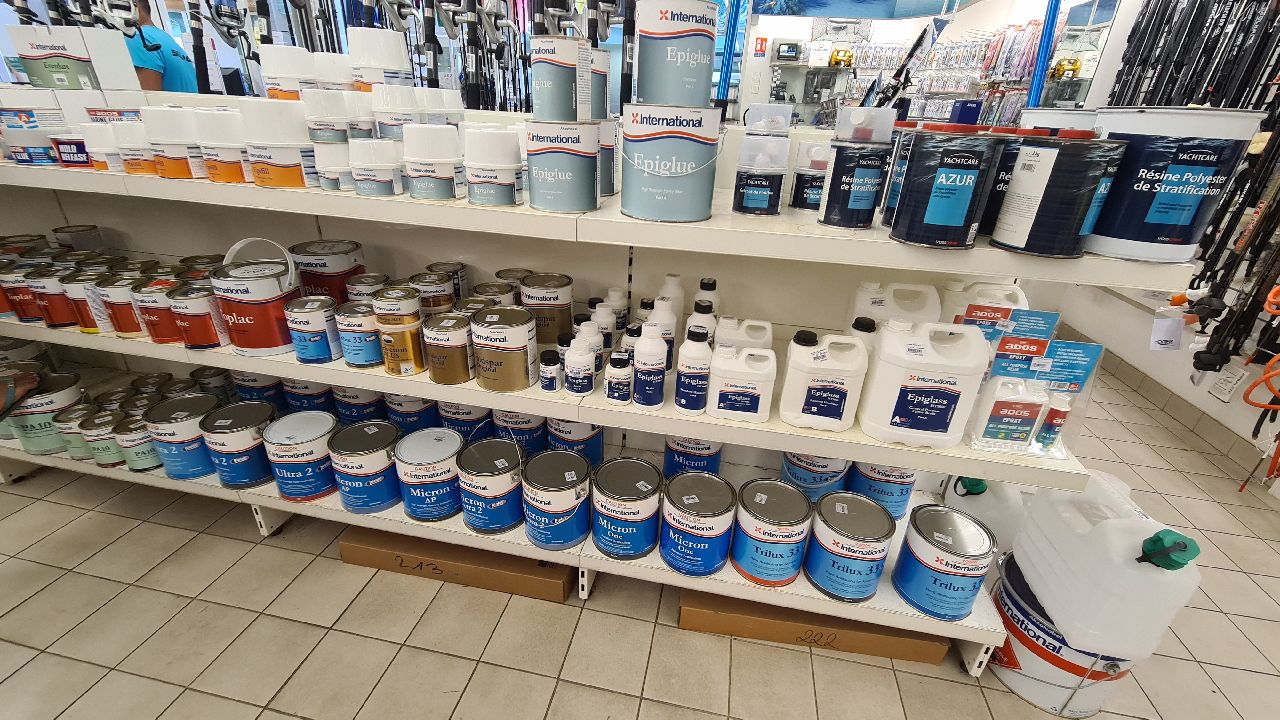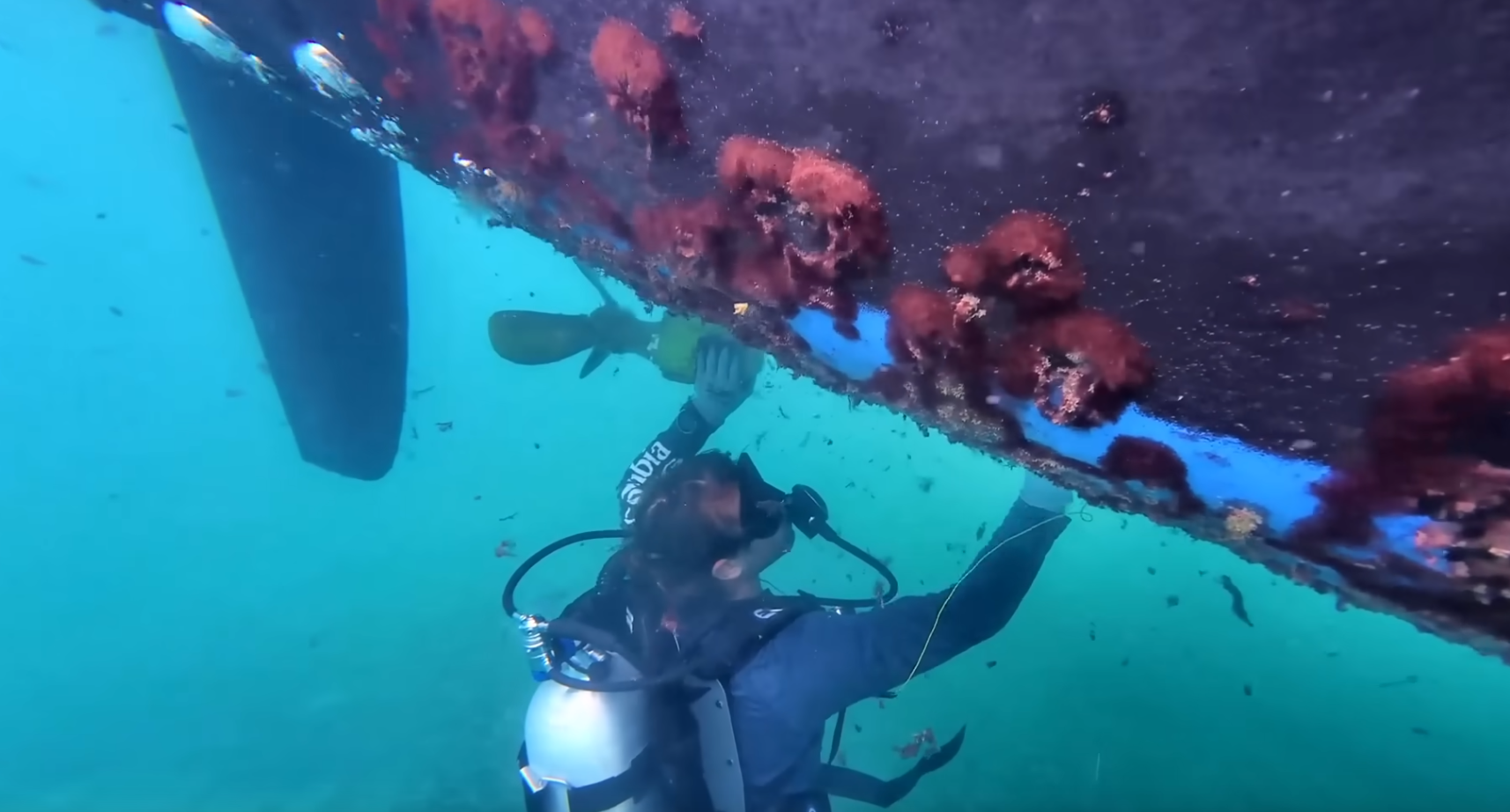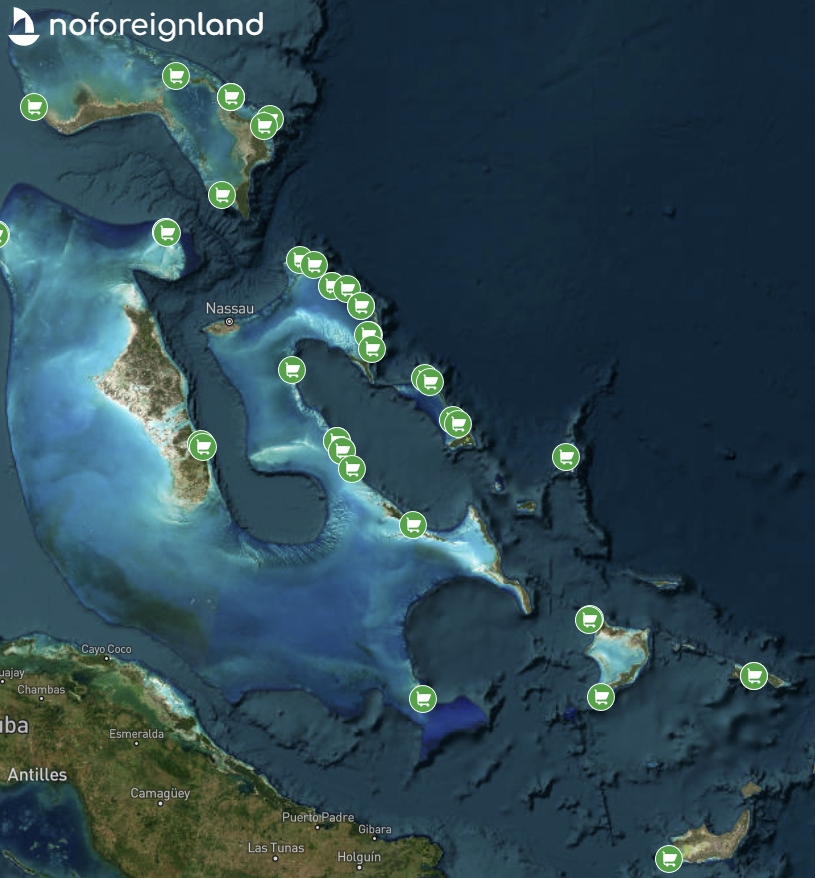Choosing which bottom paint to use is a job just about every boat owner has to tackle. Most of us weigh up things like price, color, ease of application, durability, and how well it works against growth, but there’s another factor that is starting to get more attention; the impact on the marine environment.
Why copper is a problem
Today, most conventional antifouling paints rely on copper-based compounds, such as cuprous oxide, to be the active ingredient.
Copper is a strong biocide, creating a toxic barrier that helps prevent marine growth. The downside is this same toxicity affects more than just slime and barnacles, it seeps into surrounding waters where it can harm delicate ecosystems. The rate of seepage depends on the type of antifoul, age, how it’s cleaned and the frequency of cleaning.
When the copper levels in the water get higher, it disrupts algal growth, which sits at the foundation of the food chain. When algae populations decline, everything above them – zooplankton, fish, shellfish, even marine mammals – feel the pinch. Studies on salmon have shown that copper exposure can disorient the fish, interfering with their senses and making it harder for them to migrate, feed, or avoid predators. In short, copper may keep your hull clean, but it doesn’t necessarily leave the water around you in the same condition.
Growing restrictions worldwide
Because of the environmental concerns, some ports, marinas and governments in different parts of the world, have already begun restricting in-water hull cleaning for copper-based antifouls.
In the United States, the National Recommended Water Quality Criteria established under the Clean Water Act, sets a limit on the amount of copper that can be present in marine waters. It’s possible for this amount to be exceeded as copper accumulates in poorly flushed basins, or crowded marinas. Areas of the Port of San Diego were found to have exceeded the copper limit, leading to the introduction of a Copper Reduction Program, which included more stringent regulations on hull cleaning. Washington State already has the legal framework in place to ban the sale of new recreational vessels with copper antifouling, and the sale or application of antifouling paint with >0.5% copper – they just haven’t enacted it yet.
Over in northern Europe, Denmark recently expanded their list of banned antifouls for private yacht owners with boats under 24 meters (78.7 ft), to include products like Hempel’s Mille NCT 7173A (cuperous oxide), and Hepel Hard Racing TeccCel 7679C (copper thiocyanate). Close by, Norway is implementing new regulatory frameworks and biofouling controls, after concerns about elevated contamination levels, including copper, in areas like the harbors of the Oslo Fjord.
Are copper-free antifouling solutions effective?
For years, the main criticism of copper-free antifouls was that they simply didn’t work as well. That reputation still lingers, but recent developments are beginning to prove otherwise.
For now, alternatives to copper antifouling include:
- Foul-release coatings
- Foul-release wraps
- Hydrophilic coatings
- Non-biocidal coatings
- Ultrasonic antifouling
- Natural enzyme-based solutions
Which one would be right for you would depend on your boat, budget, cruising plans and grounds, and personal preferences.
The cost of going without antifouling
One option that’s not a real solution is skipping antifouling altogether.
Having a heavily fouled hull doesn’t just slow you down; the increased drag causes the engine to burn more fuel when motoring, which drives up emissions. Research has shown that boats with untreated growth can use up to 40% more fuel than those protected with antifouling. This results in more greenhouse gases being released into the atmosphere, not to mention the cost of wasted fuel.
Making more environmentally friendly choices for now
The reality of cruising is that copper antifouling may be the only practical choice in your area. That said, you can still reduce its impact by:
- Selecting paints with a lower copper content
- Managing the removal of old antifouling responsibly
- Applying new paint carefully
- Storing or disposing of leftover antifoul paint in a way that prevents accidental environmental contamination
- Avoiding unnecessary in-water cleaning that releases concentrated bursts of copper into a marina or poorly flushed body of water
If you’re using a contractor to repaint your antifoul, it’s also worth asking them how they manage the environmental side of things.
- Is this the most environmental approach?
- Typical Caribbean antifoul application
Looking ahead
Regulations, environmental pressures, and new technology are all moving the antifouling conversation forward. Ten years ago, copper-free paints were niche. Today, they’re becoming more viable. In another decade, they might be the norm.
For liveaboard cruisers the takeaway is simple; every choice we make has an impact. From the way we provision to the coatings we put on our hulls, there are more and less sustainable choices. By staying informed and considering alternatives, we can help ensure the waters we sail in remain as healthy and inviting as possible.
Remember, the small, positive impact of one boat is multiplied when others do the same.
noforeignland is all about discussing ideas and sharing information respectfully, for the benefit of the wider sailing community.
If you’ve had an experience with an alternative antifoul, be sure to share it down in the comments! While it’s not right for everyone, you might just help make other cruisers next antifouling choice clearer.










When we were in the boat yard last year our curiosity got the better of us, and we went over to chat to a guy who was sticking what looked almost like felt patches all over the bottom of his hull. Turned out it was Finsulate, which is one of the foul-release wraps. The company warranty the product for 8 years, so they must be relatively confident it’ll last.
We are looking into getting finsulate applied on our sailing boat after this season. Looking forward to experience how good it is. I think it is a shame to sail around amazing nature and at the same time having a negative impact on the environment.
Another GREAT article Michaela! I had no idea there was even such a thing as copper-free antifouling. I certainly didn’t know that excess copper in sea water is an environmental issue.
Great Article! We’re hauled out in coastal Virginia, USA right now and have elected to run a limited test with a new(ish) foul release product – F2. It’s a biocide free product and they’re marketing it as a ≥5-year solution. We’re running it on our sail drives and rudders as we’re not doing bottom paint this haul out. If it tests well though, we’ll do the hulls next time around.
Very interesting article. Thanks for the contribution. I would just like to comment on the sylicon antifouling which seems to be an environmentally friendly solution. Yes, it is expensive; and yes, life adheres to it requiring cleaning like any other antifouling in the tropics. But, and this is a big “but”, it is claimed to have no environmental impact, and when cleaning, things go away very easily. So, for very warm waters like the tropical, I think that it is not a bad option.
Great article, outlining the problems, current and future, with copper based antifouling paint.
On my sailboat, I am using SilicOne by Hemple s Danish (?) company.
SilicOne is a copper free, biocide free bottom paint.
I had it applied a year ago and after 6 months in Mexico and now in French Polynesia’s warm water, I am very impressed with its performance. Marine growth either wipes off or is easily removed with a light scraping with a plastic putty knife.
Patrick Fox
SV Fairtide
Saga 43
it seems from the information provided that there is a move away from copper.
however all the indications withing the article are for copper based self erroding paints.
yet no mention of copper coat, which does not leach into the enviroment on such a scale.
as the coper is contained within an epox paint.
we have used copper coat for over 7 years, and has a current life expentanve of 10 plus.
requires very little maintenance.
one thing we can say it does last 15 years plus when looked after and correctly applied.
the down side, in the UK very effective only producing a slim at haul out which is jet washed off.
here in the Mediterranean its not as effective, however its very easy to use a plastic scraper on the hull to remove any stubbon parts.
now in our 2nd year in the Mediterranean with a 17 year old boat, with 8 years old copper coat. Nelson was right. futted in copper quarter swansea.
Great article! We are actually experimenting a mixed method with aluminium antifouling and ultrasonic system. As our boat is aluminium and 10 meters, we have installed 4 transductors from the SEAFLOW brand that should cover most of the exposed areas. We also add normal Seajet 034 antifouling on several coats of epoxy primer protection. We can later follow up with the result of this experiment. Fair winds to all ! SV Jiujiu
We are using a silicone based antifouling called “Silic one” by Hempel. So far we are very happy with it. The occasional algae slime and bryzoans are easily cleaned. So far the only two disadvantages we experienced we’re 1) hard to get internationally. We we’re grateful that Abel Marine in Marsden Cove, Whangarei, New Zealand was willing to get the product from their Hempel Distributor.
2) If your boat is on the hard for more than a month you have to reapply a complete coat.
Bests, Verena SY Moana
I got Hempguard X7 from Hempel applied in 2018. It is silicone based but has a small amount of biocide embedded in the paint, to prevent a few species from drilling through the silicone layer. This biocide stays inside the paint.
It is so slippery that nothing adheres to it. We have been warned with haulouts to tie the slings together otherwise the boat will slip out of them. The skin of the boat really feels as slippery as a fish, and an interesting side effect is that the boat gained 2 knots of speed compared to the previously applied antifouling.
We have been very happy with it, almost nothing grows on it, and what grows on it can easily wiped off. We used windscreen wipers for that in the first couple of years.
We are now seeing that “green stuff” adheres more easily than before, probably due to the numerous (microscopic) scratches in the paint. And if we allow that green stuff to accumulate, other species start to build on top of it. Still we can clean the hulls with plastic scrapers.
Hempel claims that the lifetime is about 10 years, we are now at 8 years and indeed, I think somewhere in 2 years it is time for some maintenance.